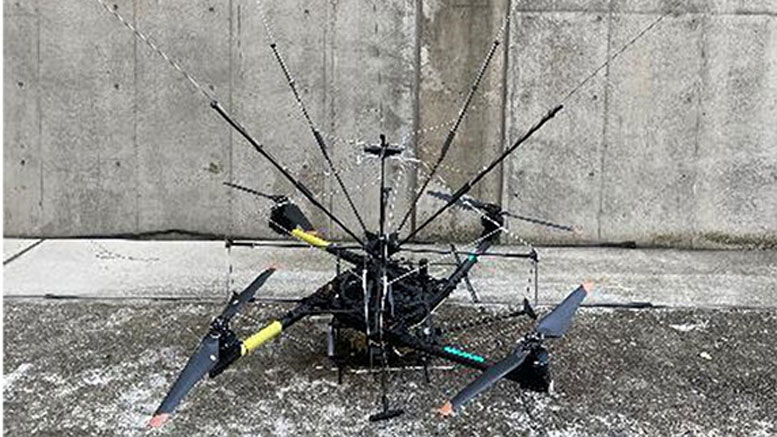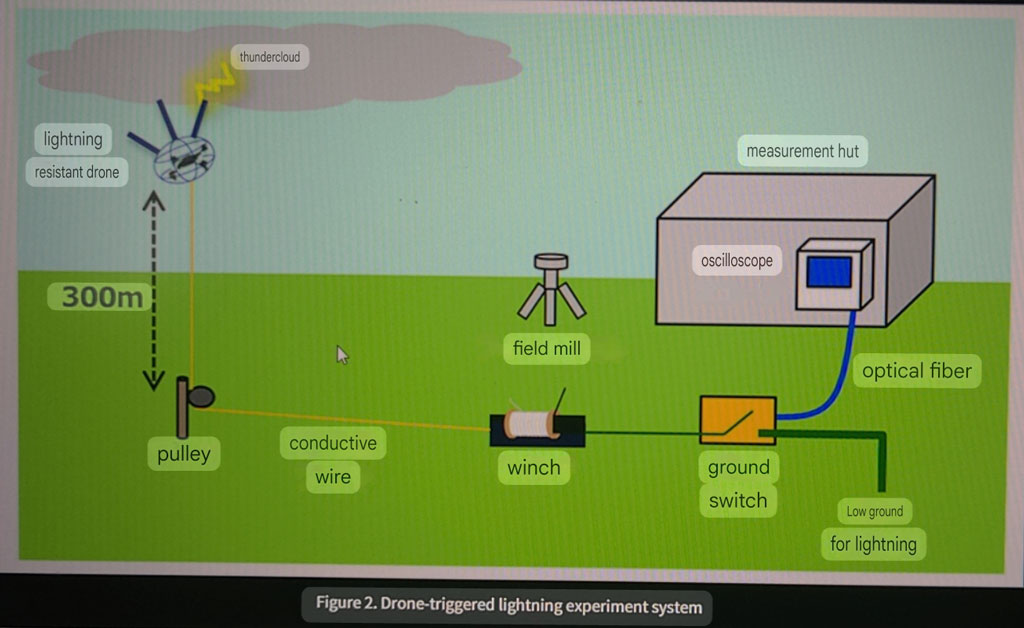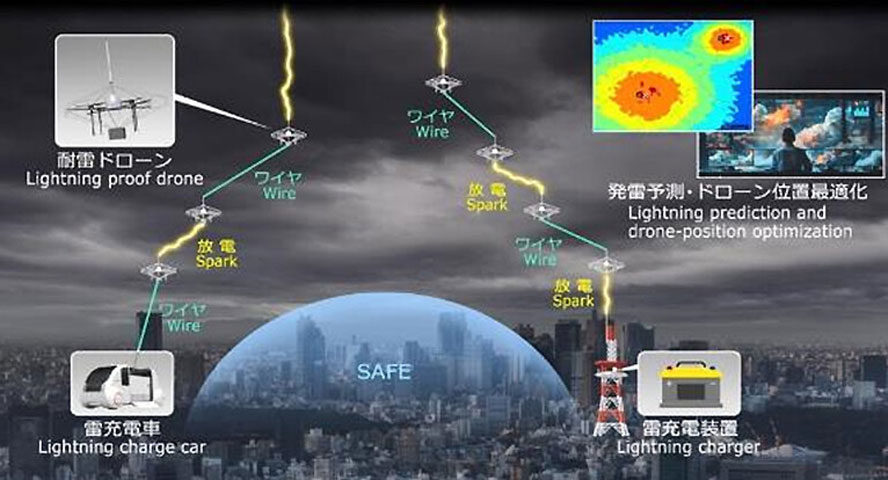
The Nippon Telegraph and Telephone Corporation (NTT) boasts that it has designed the world’s first lightning triggering and guidance system that leverages flying drones (via machine translation). After successful trials earlier this year it is hoped that networks of these drones can be installed in cities and key infrastructure as a preventative protection measure.

Lightning damage isn’t as rare as many an old adage might suggest, according to the stats shared by NTT. Its PR bulletin says that every year in Japan there is 100B to 200B Yen (up to $1.4B) worth of damage caused by lightning – and then there is the human cost to consider. Meanwhile, conventional lightning rods don’t provide as wide coverage as desirable, or might be tricky to install (e.g. wind turbines).
With the above in mind NTT set up an experiment to see if drones can be used to prevent lightning damage. The firm used ground monitoring equipment to judge the danger of lightning in an area. And basically, when thunderclouds approached and electric field fluctuations observed, a drone was sent up to intercept.
These are not kamikaze drones - they are equipped with a lightning-resistant cage. In a test flight on Dec 13, 2024, a drone attached to a ground wire was flown to 300m altitude to approach a suspected thundercloud. NTT says it then observed a massive electrical pulse and claims that it achieved “the world's first successful lightning induction using a drone.”
When the lightning struck the drone, it could continue to fly thanks to the cage protection (though it part melted). It is key that the drone could remain airborne after being zapped, says NTT and before this live trial it had successfully tested them at up to bursts of 150,000 Amps.

NTT intends to continue refining its lightning triggering and guidance drones. To augment the above study and trials it is looking at improving lightning location prediction accuracy. Moreover, there are plans to research and development into storing the lightning energy that is safely diverted.
Follow Tom's Hardware on Google News to get our up-to-date news, analysis, and reviews in your feeds. Make sure to click the Follow button.







